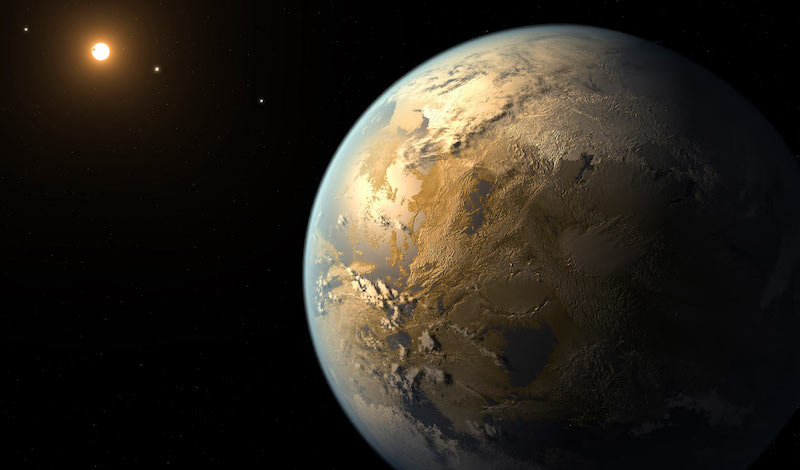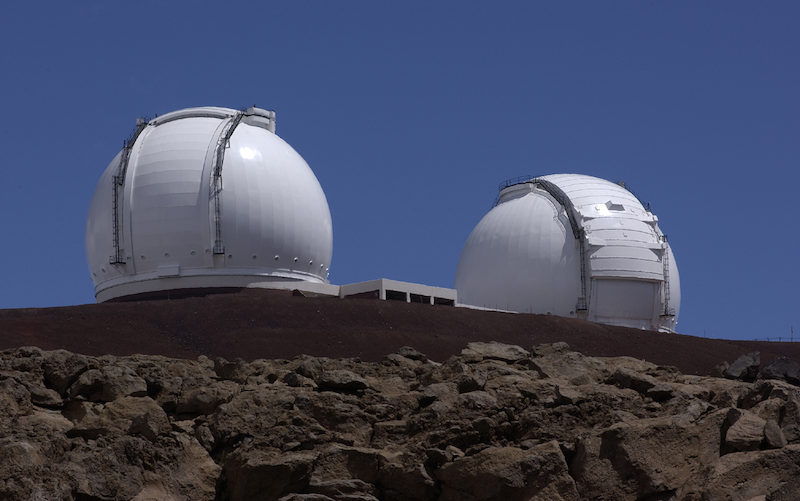
Astronomers have discovered several thousand exoplanets so far. They are worlds orbiting distant suns, and they range in size from some larger than Jupiter to small rocky planets like Earth. The rocky planets are most likely to be habitable. But small rocky planets are difficult to detect. And now there’s a new tool ready to find more of them. Astronomers at the W. M. Keck Observatory in Hawaii announced the Keck Planet Finder on November 10, 2022, saying it just achieved first light.
These scientists said the Keck Planet Finder is the world’s most advanced high-resolution spectrometer for visible wavelengths. Its purpose is to search for smaller planets like Earth orbiting other stars, in particular ones in the habitable zone.
Keck Planet Finder begins its mission
With first light – the first time a telescope or telescopic instrument opens its eyes – achieved, Keck Planet Finder can now begin its mission to find other Earth-sized or even Earth-like planets. As Hilton Lewis, Director of Keck Observatory, stated:
The advent of KPF marks a major and exciting step forward in our ability to advance the quest to eventually find habitable Earth-like planets around other stars. We have been awaiting the arrival of KPF for nearly a decade, and we are thrilled to be able to take our already very successful exoplanet discovery program to the next level.
Andrew Howard, KPF principal investigator at Caltech, added:
Seeing KPF’s first astronomical spectrum was a moving experience. I’m excited to use the instrument to study the great diversity of exoplanets and to tease apart the mysteries of how they formed and evolved to their present states.
First light for Keck Planet Finder: Jupiter and 51 Pegasi
Keck Planet Finder’s initial targets for first light included a planet much closer to home and a distant star. The astronomers made these initial observations – of Jupiter and the star 51 Pegasi – on November 9. The instrument successfully captured the light spectrum of both objects for its first tests. In fact, the planet 51 Pegasi b, which orbits the star 51 Pegasi, was the first exoplanet found orbiting a sunlike star, using the Doppler Technique (or Doppler spectroscopy).
Now, Keck Planet Finder is ready to begin its mission to look for other potentially habitable planets similar to Earth. We are poised to, for the first time, learn more about planets around other stars that are relatively nearby to us. As Sherry Yeh, deputy instrument scientist for Keck Planet Finder, noted:
Prior to the recent exoplanet discovery boom over the last two decades, we did not really know what other planets were out there. We did not know whether our own solar system or our own Earth were common. We are the first generation who will really understand other planets in our galactic neighborhood.
The Doppler technique
So, how will Keck Planet Finder actually find planets? It will do so using the Doppler technique. As a matter of fact, Keck Observatory first developed this method. It detects planets by looking for the gravitational effects they have on their stars. In other words, it looks to see if the stars wobble slightly. A planet’s gravity causes this wobbling, affecting – very slightly – the movement of the star.
More massive planets with higher gravity are, naturally, easier to detect than smaller rocky planets. That’s where Kepler Planet Finder comes in. Indeed, it is powerful enough to observe extremely slight wobbles – down to 30 centimeters/ second – like those from small planets. That’s slower than a human walking. For comparison, Keck Observatory’s current planet-hunting instrument, called the High-Resolution Echelle Spectrometer (HIRES), can detect stellar motions of 200 centimeters/second. In contrast, Keck Planet Finder is much more sensitive, just what is needed to search for Earth-sized planets.
Josh Walawender, instrument scientist for Keck Planet Finder at Keck Observatory, said:
The challenges of making measurements like this would have been seen as insurmountable just a few decades ago. KPF is the result of an astonishing amount of human ingenuity, which has been applied to solving problems and bypassing obstacles to our understanding of the universe around us. To me, KPF represents one of the very best traits of humankind: the humble desire to see and learn about the universe that surrounds us and thus better understand the place where we live.
Zerodur
How is Keck Planet Finder able to achieve such precision? The answer lies in the special material that the spectrometer is made of. This material, called Zerodur, is a glass-ceramic hybrid. It is able to maintain its shape despite fluctuations in temperature. This capability is essential, because even tiny movements of the Keck Planet Finder instrument can cause false positives. In other words, showing doppler shifts in stars that actually aren’t really there. Ryan Rubenzahl at Caltech explained:
Light bounces between mirrors inside the instrument. If the base of the spectrograph expands, then the distance between the mirrors changes, and this leads to light landing in the wrong place. It may look like stellar light has Doppler shifted because of orbiting planets, but in fact the instrument itself has shifted.
In addition, the Keck Observatory’s primary mirror segments are composed of the same material.
Keck Planet Finder is the first spectrometer of its kind to use Zerodur. Howard said:
This is the first spectrometer to integrate Zerodur into its design. The material, which comes in giant slabs, is very fragile and hard to work with, but it is what makes KPF so sensitive to smaller planets.

Planets in the habitable zone
Keck Planet Finder can not only find smaller rocky planets, it can find ones in the habitable zones of their stars. At the moment, it is limited to smaller, cooler stars like red dwarfs. However, even red dwarfs have habitable zones, and astronomers have already found many planets orbiting them. As Howard explained:
Stars that are cooler than our sun have habitable zones that are located closer to the star. Any Earth-like planets in this zone would be huddled close to their stars like it is a campfire. We will continue to tune and refine KPF to detect even fainter wobbles, with the goal of eventually having the sensitivity to detect Earth-mass planets that orbit stars like our sun, the true Earth analogs.
Keck Planet Finder can also determine the compositions of about 1,000 planets previously discovered by NASA’s Kepler Space Telescope. Howard added:
KPF will be much more precise than our current tools, enabling richer science through better measurements of the masses, orbits and compositions of the smaller planets. It will also be faster, so we can measure planet masses in much less time than it took before. This means we can survey more planets.
Keck Planet Finder will officially begin hunting planets next spring.
Bottom line: The Keck Planet Finder instrument on the Keck 1 Telescope in Hawaii has achieved first light. It will now begin its search for habitable Earth-sized planets around other stars.











